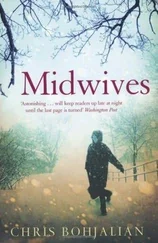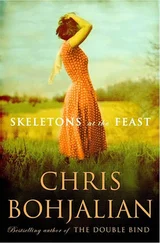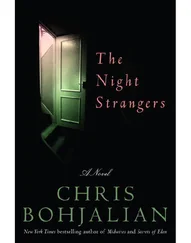“I READ SOME of your books last night,” I told her as I sipped the peppermint iced tea she had in a glass pitcher in her refrigerator. I couldn’t remember the last time I had drunk tea, hot or cold. But just as I didn’t keep tea around my kitchen, she didn’t keep coffee in hers. This seemed very significant to me at the time, a further indication that there was no future between a pastor in the midst of a crisis of faith and a self-help writer with an apparent fixation on angels. “I enjoyed them,” I said.
“But… ” She was smiling.
“But there’s a lot there about cherubs and seraphim. About luminescence and flashes of light.”
“And prayer. And meditation.”
“That, too.”
Her loft, as she had told me, was really not all that extravagant: high tin ceilings, the original fleur-de-lis tile, but not the basketball arena I had seen in my mind. A soft wood floor, wide pine that I suspected had probably been there for generations, covered in sections with plush Oriental rugs. A row of tall windows faced out upon Greene Street, each of them about half as large as the stained-glass windows of the church in Haverill, and there were four chandeliers dangling from the ceiling that initially left me confused and disturbed. I thought the bulbs of coiled glass were supposed to be the snakes that grew from Medusa’s skull. But then I realized I was mistaken: The tentacles, I saw when I looked more closely, were merely the arms and trumpets and small, delicate feet of angels. The glass was white as cooked rice. And on a solid-looking pedestal on one side of a bookcase, positioned against a wall so a visitor couldn’t help but feel he was being watched, was a carved bird the size of a preschooler. It was a bird of prey of some kind, an osprey perhaps, quite accurate, I thought, except that the wings-which were unfolded as if it were about to dive from a high perch-looked like they belonged on an angel. They ran parallel to the bird’s body and were arched at the top like a harp.
“The reality is that I probably view angels in much the same way that you do,” she said. “The fact you’ve come here suggests you don’t believe I’m a complete phony.” We were sitting on an elegant wrought-iron daybed with black bolsters. It was adjacent to the wall with the windows, near a row of hulking stainless-steel kitchen appliances: The refrigerator doors alone looked wide enough to be the entrance to a walk-in closet. There was another corner of the loft with a regular couch, a mirrored coffee table, and a pair of reupholstered easy chairs without arms that looked as if they were from the 1950s. She slept on a bed in an alcove ledge high above the corner in which-based on the desk and computer-she wrote. Along the wall opposite all those windows, broken only by the entryway, was a long line of modern wardrobe doors: the critical renovation she had made, she would tell me later, because the loft was wholly bereft of closets. I counted five wardrobes on each side of the entryway. And scattered along the walls that had neither windows nor wardrobes were framed dust jackets of her books beside specific bestseller lists, as well as a half dozen prints of angels: grown-up angels, I was happy to see, not pudgy child ones with naked ham hocks for thighs. There was a small painting of an angel in a copse of cedar trees that looked a bit like a Botticelli, but she had assured me that it was the work of a minor painter from Siena and it was barely two hundred years old.
“I don’t believe you’re a phony at all,” I said.
“A bit loopy, maybe,” she suggested. “But not phony.”
“You’re putting words in my mouth,” I insisted. “Just last Sunday a fellow in my church who is five years younger than I am and dying of cancer gave the children’s message, and he talked all about the angels among us. He told the kids angels don’t always have wings.”
“He’s right.”
“He said they were the women who drive him to and from his chemotherapy. Who make him his carrot juice.”
She nodded. “I have readers, of course, who see angels in a pretty literal sense. When I was in Vermont the other day, I had one reader tell me that a particularly amazing angel had caught her husband’s small plane in midair when the engine flamed out and stopped it from crashing.”
“How?”
“You know, with his hands.”
“Just brought it safely to earth?”
“Because the angel had wings,” she said, as if this explained everything. I found myself imagining, no doubt as this reader had, an angel in a white robe flying atop a Cessna, holding the fuselage in his hands while flapping his wings to keep both him and the plane aloft. “As you might imagine, my books do better with some sorts of readers than with others.”
She was wearing black jeans and a white linen top, which was untucked. Her feet were bare, and she had curled them beneath her on the couch. Her toenails were plum.
“What would you be doing if I hadn’t appeared?” I asked.
“Going through the piles of mail my assistant prioritized in my absence. Reading e-mail. Grocery shopping. It was going to be a pretty glamorous Saturday.”
“How long have you lived here?”
“Oh, let’s see. Today’s the first day of August. A little less than two years. I call this the Loft That Angels Built,” and I understood she was referring to her first book.
“And you’ve always lived here alone?”
“I have.”
“May I ask you something?”
“You seem to be asking me a great many somethings. Go ahead.”
“Do you pray?” I hadn’t meant it to be an especially challenging or antagonistic inquiry-though I did hear in my head the homonym, prey , and that part of me that I have discovered is capable of unexpected bouts of savagery and anger may have lent an edge to my voice-and she sat back and seemed to be contemplating the question, her eyes growing a little stern, her forehead slightly creased. I imagined her suddenly as a child struggling with a math equation that was beyond her ken. “Everyone prays,” she said finally, “even if they don’t use that verb. Even if they’re not completely sure who or what they’re imploring. Why? Have you stopped praying?”
“So it seems,” I answered, and I told her how hard I had tried that past week to connect with a living God-and how I had even faked it late Tuesday afternoon before the altar with Joanie Gaylord. I had, in truth, spent a good part of Wednesday afternoon at the church. I was either alone in my office in the wing by the Sunday-school classrooms or in the sanctuary itself trying to pray. I let Betsy or the answering machine handle the usual sorts of calls that came in-a request to give the invocation at a special Masonic gathering at the lodge in Bennington, a change in the date of an upcoming Church Council meeting, the increasingly urgent need as September approached to find a Sunday-school teacher for the third-and fourth-graders-as well as the barrage that was linked directly to the Haywards’ deaths and upcoming funeral: The mortician. A deacon. The high-school principal. Ginny.
In theory I knew a very great deal about prayer, so praying shouldn’t have been all that difficult. I had studied it at seminary, I had read all the right books. I’d led prayer groups in my little church, I’d conducted seminars for pastors and lay people in our region. And though I never had expectations of a miracle when someone was actively dying, there had been a period in my life when I had believed fervently in the healing powers of prayer. For over two decades, I had prayed every single day of my life.
Yet when I’d fall on my knees in the days immediately after Alice and George Hayward had died, praying in different measures for forgiveness and healing and understanding, I’d come to realize that I didn’t know a bloody thing about prayer-at least not anything useful. When I needed to find the Lord most desperately, I hadn’t a clue where to begin.
Читать дальше











